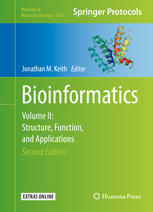

Most ebook files are in PDF format, so you can easily read them using various software such as Foxit Reader or directly on the Google Chrome browser.
Some ebook files are released by publishers in other formats such as .awz, .mobi, .epub, .fb2, etc. You may need to install specific software to read these formats on mobile/PC, such as Calibre.
Please read the tutorial at this link: https://ebookbell.com/faq
We offer FREE conversion to the popular formats you request; however, this may take some time. Therefore, right after payment, please email us, and we will try to provide the service as quickly as possible.
For some exceptional file formats or broken links (if any), please refrain from opening any disputes. Instead, email us first, and we will try to assist within a maximum of 6 hours.
EbookBell Team

4.8
84 reviewsThis second edition provides updated and expanded chapters covering a broad sampling of useful and current methods in the rapidly developing and expanding field of bioinformatics. Bioinformatics, Volume II: Structure, Function, and Applications, Second Edition is comprised of three sections: Structure, Function, Pathways and Networks; Applications; and Computational Methods. The first section examines methodologies for understanding biological molecules as systems of interacting elements. The Applications section covers numerous applications of bioinformatics, focusing on analysis of genome-wide association data, computational diagnostic, and drug discovery. The final section describes four broadly applicable computational methods that are important to this field. These are: modeling and inference, clustering, parameterized algorithmics, and visualization. As a volume in the highly successful Methods in Molecular Biology series, chapters feature the kind of detail and expert implementation advice to ensure positive results.
Comprehensive and practical, Bioinformatics, Volume II: Structure, Function, and Applications is an essential resource for graduate students, early career researchers, and others who are in the process of integrating new bioinformatics methods into their research.